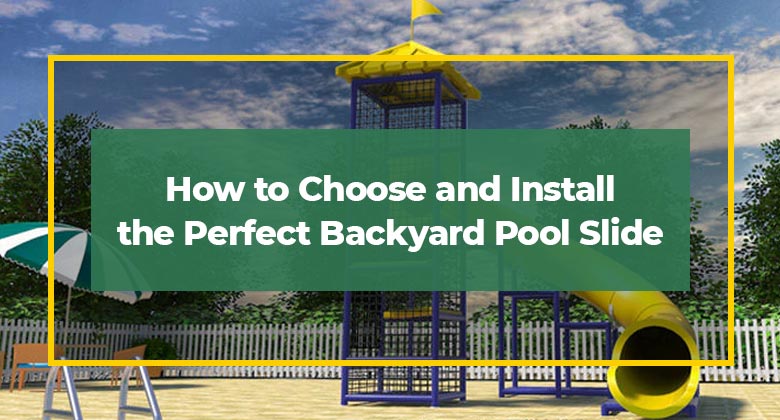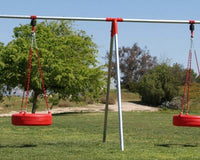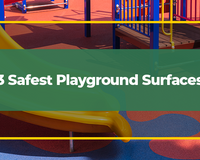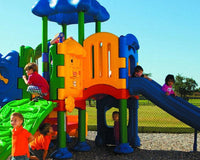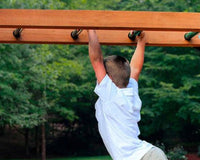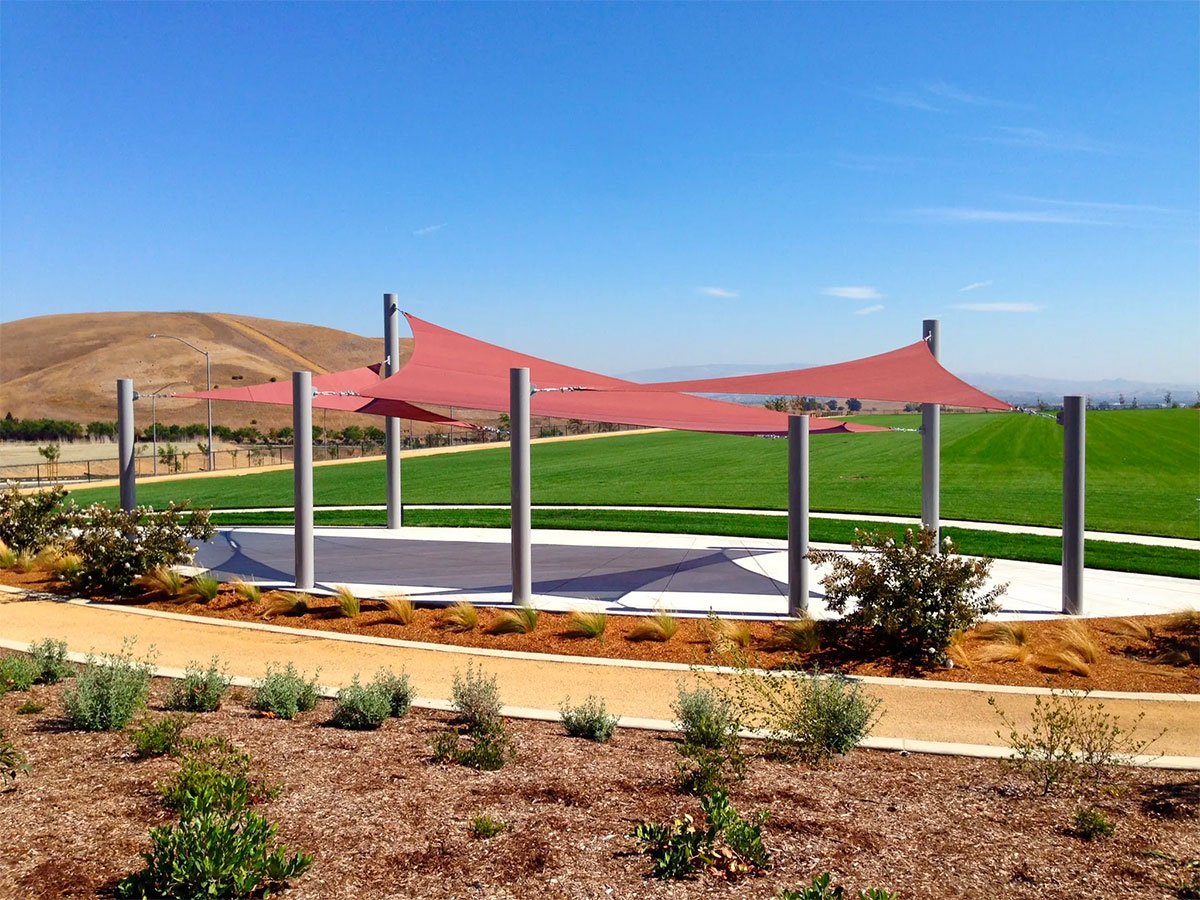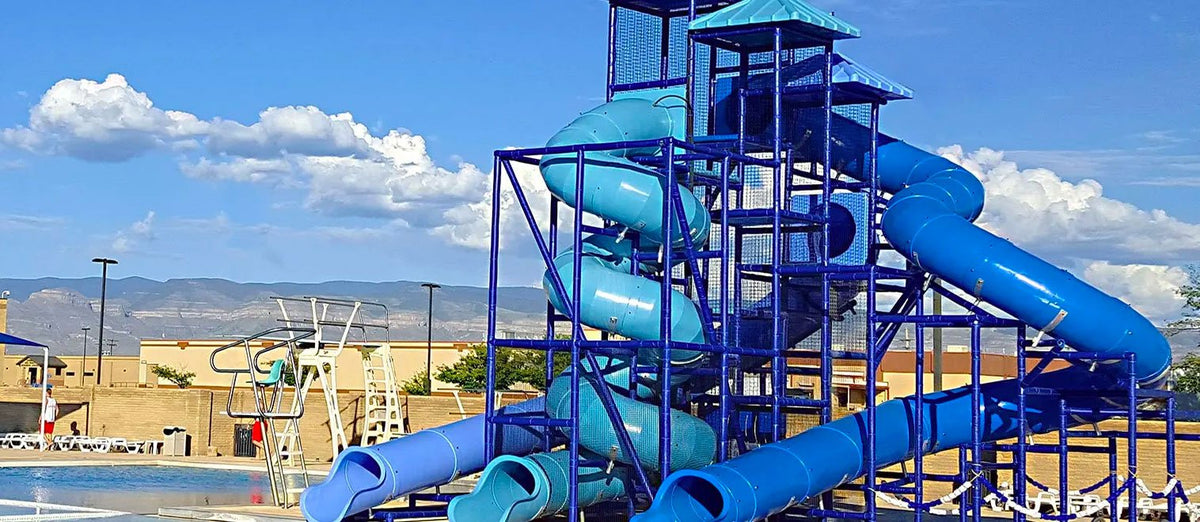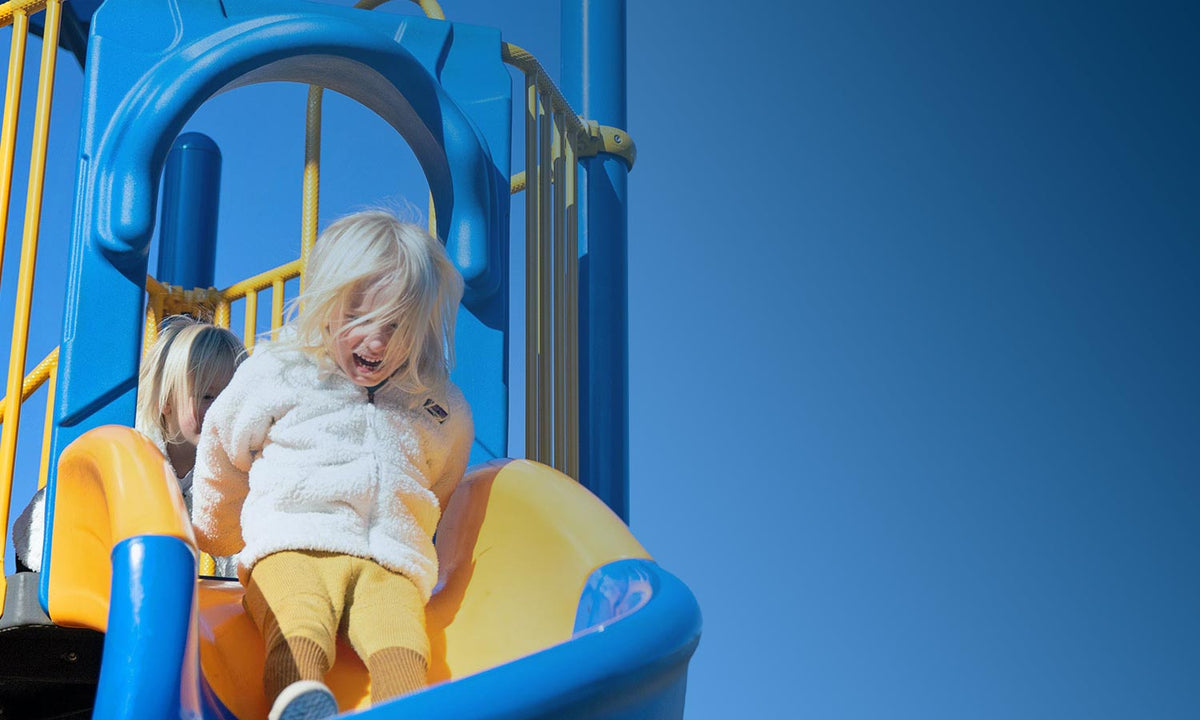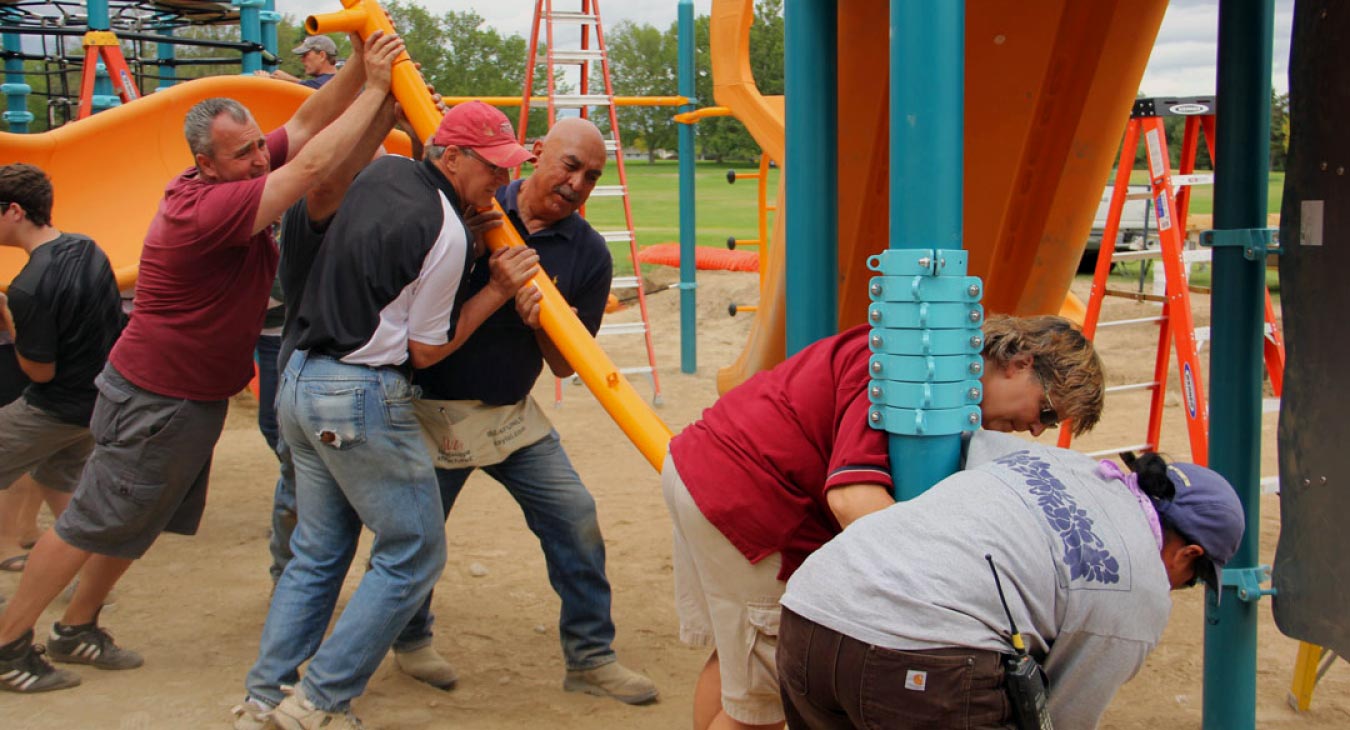How to Choose and Install the Perfect Backyard Pool Slide
The right slide can transform any backyard pool into a private waterpark. Like a diving board or a pool ladder, a slide can make a great addition to any inground design.
It's easy to add a slide to your pool, but it's vital that you do your research first. Without the proper slide setup, you may be running the risk of an accident or injury. An estimated 6,700 emergency room trips are due to pool-related accidents each year.
In this guide, we'll discuss how to choose the perfect slide for your pool. We'll also cover how to prepare the area and install your slide so that you can enjoy summers of fun for years to come.
Who Can Own a Pool Slide?
Just because you have an inground pool setup doesn't necessarily mean that you can install a pool slide. It's important to check local laws and ordinances before adding any accessories to your pool.
Some states and cities have specific regulations for families who install a pool slide. Most of these laws are in place to help protect both homeowners and visitors from the risk of injury or death.
If you fail to follow local laws when installing your pool slide, you could be facing a steep fine. If someone gets injured by your pool setup, you may be in even more legal and financial trouble.
Remember that city or county rules are often more strict and specific than state laws. It's a good idea to check with your local council or city planner to see if there are any local regulations in place when it comes to backyard pool slides.
If you live in a neighborhood with a Homeowner's Association, they may have additional rules in place for residents with pools. An HOA can enforce pool slide regulations ranging from height restrictions to fencing. Some may even prohibit the installation of visible add-ons such as slides.
Before you spend any time and money on a backyard pool slide, it's always a good idea to check with local regulatory bodies to ensure that you're doing everything by the books. Doing this can protect you from a whole world of legal and financial hurt down the road.
CPSC Compliance
If you're going to install a slide that meets regulations, you need to ensure the product itself is up to code. A safe, legal setup requires a slide that meets strict product testing standards.
Any slide you buy for your pool should have a CPSC Compliant label. This certification means that it meets rigorous safety standards for water slides laid forth by the Consumer Product Safety Commission.
This regulatory body, established in 1972, works to protect the public from accidents, injuries, or death caused by faulty products. The CPSC reviews, analyzes, and tests standard consumer products to ensure that they're safe for sale.
The CPSC adopted standards for swimming pool slides soon after its inception, in 1976. To this day, all backyard pool slide models must pass 48 different performance standards, ranging from the angle of entry to manufacturing materials.
The CPSC Safety Standard for Swimming Pool Slides also contains information on how to best install, maintain, and use a pool slide to reduce the risk of injury.
When purchasing a pool slide, always look for those that are CPSC compliant. Slides that don't meet these testing standards may pose a risk to you, your family, and any visitors you may have.
Space Constraints and Considerations
One of the most important considerations when installing a slide is space. Here, we'll show you how to determine whether a given slide will fit your inground pool setup.
Deck Size
A pool slide can take up a significant amount of deck space around your pool. You need to ensure that everything is bolted and secured in place, which requires plenty of flat space. In some cases, you may even need to pour additional concrete around your deck to accommodate a new slide.
If you plan on having a lot of traffic coming through your slide, it's a good idea to leave extra space to contain a line of people. There should be enough room for traffic to move around the pool without your slide impeding the flow.
The amount of deck space that your slide will require depends primarily on size. The longer the slide's surface, the more pool edge it will take.
You may be able to save some room by opting for a curved slide, but you still need plenty of free deck space if you want to add a slide to your pool setup.
Most slides include a manufacturer's recommendation for minimum deck space to ensure stability. Depending on the size of the slide, this can range anywhere from a 5 ft X 5 ft deck to more than 15 ft X 13 ft of free space.
If your backyard is big enough, you may be able to expand your deck to accommodate a larger slide. Just remember that concrete isn't cheap, and a pour can significantly increase installation costs.
Pool Depth
If you plan to install a slide, your pool must be deep enough to prevent sliders from making contact with the bottom. Otherwise, you run the risk of catastrophic and even life-threatening injuries.
A slide with a deep entry point can be a health and safety risk as well. Young sliders or inexperienced swimmers may have difficulty getting back up to the surface after entering the water.
Different slides will have unique pool depth requirements, as stated by the manufacturer. As a general rule of thumb, longer slides require deeper pools.
It's best to leave at least three feet of water space under the mouth of your water slide. Doing so should provide enough clearance for riders to safely exit the slide without any risk of hitting the bottom.
Don't forget that you need to maintain the proper depth for some distance past the mouth of your slide. Riders need enough space to slow down without hitting the sides or bottom of the pool.
In most instances, the best area for a pool slide is towards the pool's deep end. However, in large or deep pools, the center may be closer to the manufacturer-recommended depth.
Always check the depth of your pool when considering adding a water slide. Doing so will help you choose a model in the correct size range for your inground setup.
Choosing the Right Slide
Size is only one consideration when it comes to choosing a slide for your backyard pool. It’s also important to know how safe your water slides are. Taking this into consideration, read on to learn more about what to look for in a pool slide.
Design
Pool slides come in all different shapes and sizes, but most can fit into one of three distinct design styles.
Straight slides are a popular, straightforward choice and often the most cost-effective option. However, they tend to take up more pool and deck space than other design options.
Curved slides don't extend as far out into the pool as straight models, and you can often find simple, affordable options made for backyard setups.
Spiral slides save the most space, and the sharp turns can be a blast for kids and adults alike. This style tends to be more expensive than others, but you get more slide per square foot.
Color
Traditionally, pool slides designed for home pools are light or dark blue in color. With slides gaining popularity as poolside fixtures, though, homeowners are starting to see a much wider variety of color options available on the market.
Many people opt to install a pool with a stony or sandy facade to match their garden landscaping. White pool slides are also a popular choice, as they keep water cool in the summer by reflecting heat and sunlight.
Materials
Most pool slide construction focuses on one of two materials. Both are lightweight, durable, and resistant to rust, corrosion, chemicals, and UV rays. The type of material you choose will depend primarily on price and budget constraints.
Fiberglass
Historically, most pool slides have contained fiberglass thanks to its durable, weather-resistant nature. This fiberglass is covered or coated in a smooth, even surface to keep riders comfortable.
Fiberglass tends to be the strongest and longest-lasting material for water slides. It's also relatively low-maintenance for more accessible pool care.
Molded Polyethylene
Nowadays, most pool slides available on the market are made from molded polyethylene. This plastic is almost as robust as fiberglass and just as tough, resisting heat, weather, and pool chemicals such as chlorine.
Polyethylene is often the best material for those looking for the perfect water slide but on a budget. Though they don't always last as long, they tend to be cheaper than their fiberglass counterparts and hold their shape well throughout the years.
Price
You can find pool slides in just about any price range, from simple budget options to waterpark-grade feats of engineering.
In general, the larger your slide or more complex the design, the more you can expect to pay. If you're wondering about the cost of a water slide, remember that size, design complexity, and even tube slides can send the price splashing higher.
You can expect to pay around $1500 on the low end for a CPSC-compliant backyard pool slide. In general, you'll only find simple straight and curved slides at this price, usually in a limited number of color options.
Models with water slide accessories such as waterfalls and faux boulders can run more than $10,000 to $15,000 per unit. For the real deal options, it can cost upwards of $30,000.
Contact us to learn more about our water slides.
Prepping Your Pool
Once you have your slide picked out, it's still not quite time to crack out the DIY tools. First, you need to prepare your pool area to ensure that the installation process goes as smoothly as possible.
You should clear the area immediately around your pool so that you have plenty of space to work safely. Make sure that there are no tripping hazards such as loose hoses or pool toys.
If the concrete where you plan to place your pool slide is dirty, now is a good time to do any cleaning and repairs that it needs. Once your slide is in place, it will be much more challenging to clean the area underneath.
With severely stained or aged concrete, you may want to invest in a pressure washer for quick and efficient cleaning. If you want to keep your project budget down, you can also rent a pressure washer for a fraction of the cost.
Before you start assembling your slide, you may want to lay down a tarp or blanket where you plan to work. Doing this will prevent any scratches on the surface that could affect sliding speed or overall comfort.
It's also a good idea to collect all of the tools that you'll need in one place before you get to work. You won't have to worry about running off to the garage while trying to support heavy fixtures. For most assemblies, you'll need:
- A set of socket wrenches
- Pliers and vice grips
- A hammer and appropriately sized nails
- A screwdriver and appropriately sized screws
- A hex key set
- A rotary hammer drill
- Measuring tape and a level
How to Install a Pool Slide
While you can hire a professional to install your slide, in many cases, it's easy enough to do yourself without any advanced DIY skills. Often, it only takes a matter of hours to assemble and install a slide.
While you can work with just one person, it's safer and easier to install a pool slide alongside a partner. This way, you won't be lifting and supporting heavy components yourself.
While all manufacturer instructions will be slightly different, most water slides have a similar installation procedure.
You must anchor the slide into the concrete of your deck by drilling holes using a rotary hammer drill. Once your secure anchors into the deck, tighten the nuts using pliers or a socket wrench to ensure that the slide's legs are stable and secure.
With some slides, you can use a garden hose to supply a steady stream of water during use. Others include plumbing in the design that lets you connect the slide's water supply to your pool or home. While this can be a challenge, it will often save you on maintenance costs in the long run.
The Bottom Line
There's no better way to improve your backyard pool than by adding a water slide. However, you need to make sure that you choose the right slide for your setup. That way, once you install your slide, you can have peace of mind that all of your friends and family will have a safe and enjoyable poolside experience.


